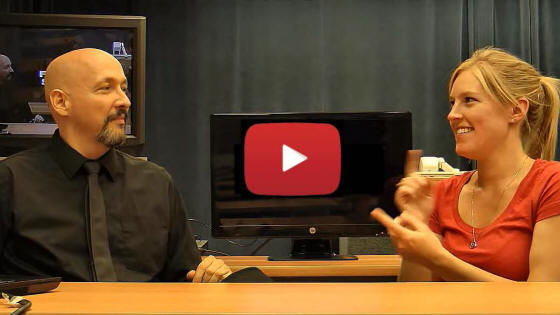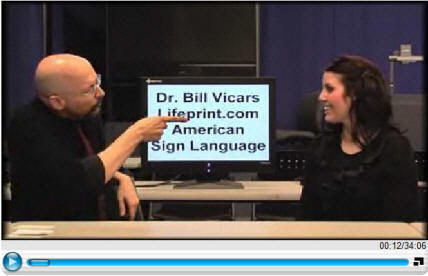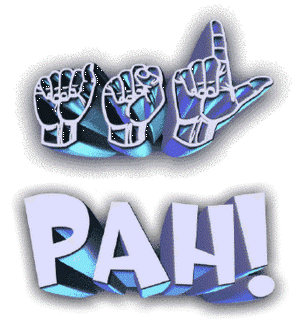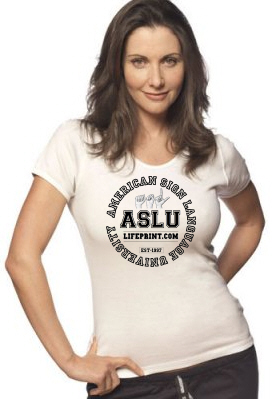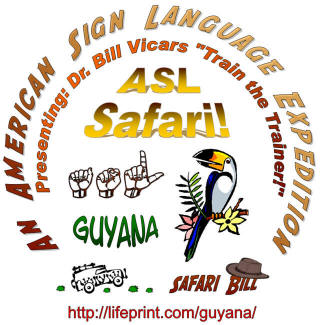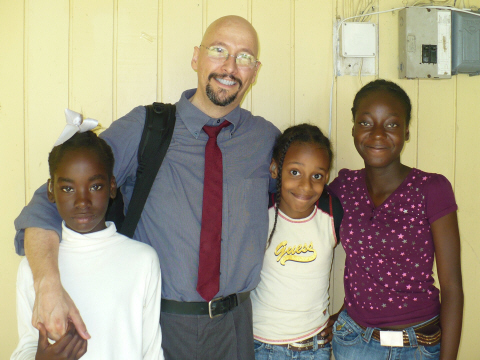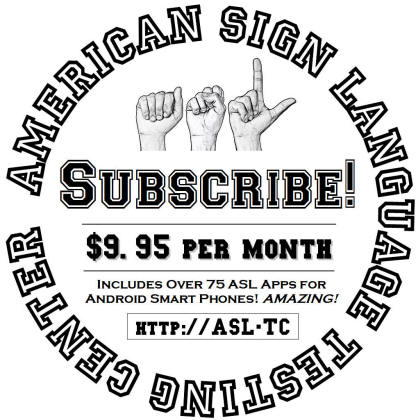 |
American Sign Language University is resource site for ASL students and teachers. Here you will find information and resources to help you learn ASL and improve your signing.
ASL Lessons:
|1|2|3|4|5|6|7|8|9|10|11|12|13|14|15|16|17|18|19|20|21|22|23|24|25|26|27|28|29|30| More...
● The Level 3 videos are available in the ASLU Bookstore.
● Dr. Bill's American Sign Language (ASL) iBook! https://itunes.apple.com/us/book/american-sign-language/id667140172
● Subscribe to "ASL.tc" and get over 75 ASL study tools for your Android Smartphone. Visit http://asl.tc for more info.
Hello ASL Heroes!
I'm glad you are here! You
can learn ASL! You've picked a great topic to be
studying. Signing is useful skill that can open up for you
a new world of relationships and understanding. I've been
teaching American Sign Language for over 20 years and I am
passionate about it. I'm Deaf/hh, my wife is d/Deaf, I
hold a doctorate in Deaf Education / Deaf Studies. My day job
is being a full-time tenured ASL Instructor at California State
University (Sacramento).
What you are learning here is important. Knowing sign language
will enable you to meet and interact with a whole new group of
people. It will also allow you to communicate with your baby
many months earlier than the typical non-signing parent!
Learning to sign even improves your brain! (Acquiring a
second language is linked to neurological development and helps
keep your mind alert and strong as you age.)
It is my
goal to deliver a convenient, enjoyable, learning experience
that goes beyond the basics and empowers you via a
scientifically engineered approach and modern methodologies that
save you time & effort while providing maximum results.
I designed this communication-focused curriculum for my own
in-person college ASL classes and put it online to make it easy
for my students to access. I decided to open the material
up to the world for free since there are many parents of Deaf
children who NEED to learn how to sign but may live too far from
a traditional classroom. Now people have the opportunity to
study from almost anywhere via mobile learning, but I
started this approach
many years ago -- way before it became the new normal.
You can self-study for free (or take it as an actual course for
$483, see here for more
details). Many college students use this site as an easy way to
support what they are learning in their local ASL classes.
ASL is a visual gestural
language. That means it is a language that is expressed through the
hands and face and is perceived through the eyes. It isn't just waving your
hands in the air. If you furrow your eyebrows, tilt your head, glance in a
certain direction, lean your body a certain way, puff your cheek, or any
number of other "inflections" --you are adding or changing meaning in
ASL. A "visual gestural" language carries just as much information as any
spoken language. There is much more to learning American Sign Language than
just memorizing signs. ASL has its own grammar, culture, history,
terminology and other unique characteristics. It takes time and effort to
become a "skilled signer." But you have to start somewhere if you are
going to get anywhere--so dive in and enjoy.
Cordially.
- Dr. Bill
|
● Course Advisor
● Resources
● "Longer Bio"
|
From the studio: Dr. Bill teaching one-on-one: |
A mother (christy1246@______) writes:
Dr. Vicars,
I have a perfectly healthy 2 year old that refuses to talk. We have a vocabulary of 124 signs (most of what are on the 100 signs page). We constantly go through the "What's the sign for ..." and pull up the bookmark of your web page. If you actually have time to read this email can you answer a question...We need a bigger list of signs, would you recommend me going through the lessons or are you working on a "more signs" page of maybe 100 to 200 of the most commonly used signs? ...
-- Christy

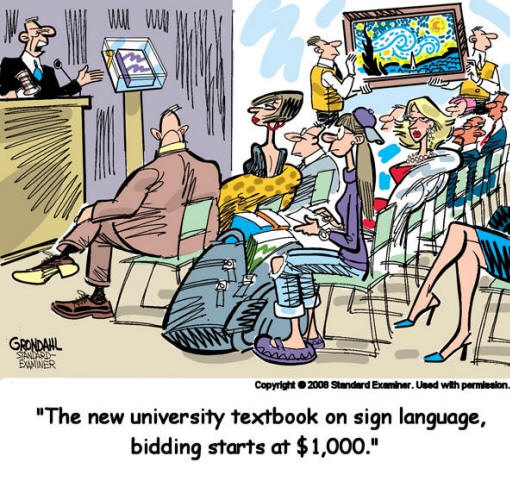 Christy,
Christy,
Hello :)
The main series of lessons
in the ASL University Curriculum are based on research I did into what are
the most common concepts used in everyday communication. I compiled
lists of concepts from concordance research based on a language database
(corpus) of hundreds of thousands of language samples. Then I took the
concepts that appeared the most frequently and translated those concepts
into their equivalent ASL counterparts and included them in the lessons
moving from most frequently used to less frequently used.
Thus, going through the lessons sequentially starting with lesson 1 allows
you to reach communicative competence in sign language very quickly--and it
is based on second language acquisition research (mixed with a couple
decades of real world ASL teaching experience).
Cordially,
- Dr. Bill
p.s. Another very real and important part of the Lifeprint ASL curriculum project is that of being able to use the "magic" of the internet to provide a high quality sign language curriculum to those who need it the most but are often least able to afford it. (See the Guyana link below.)
p.p.s. That cartoon sums up my philosophy regarding curriculum. Students shouldn't have to pay outrageous amounts of money just to learn sign language. -Dr. Bill
